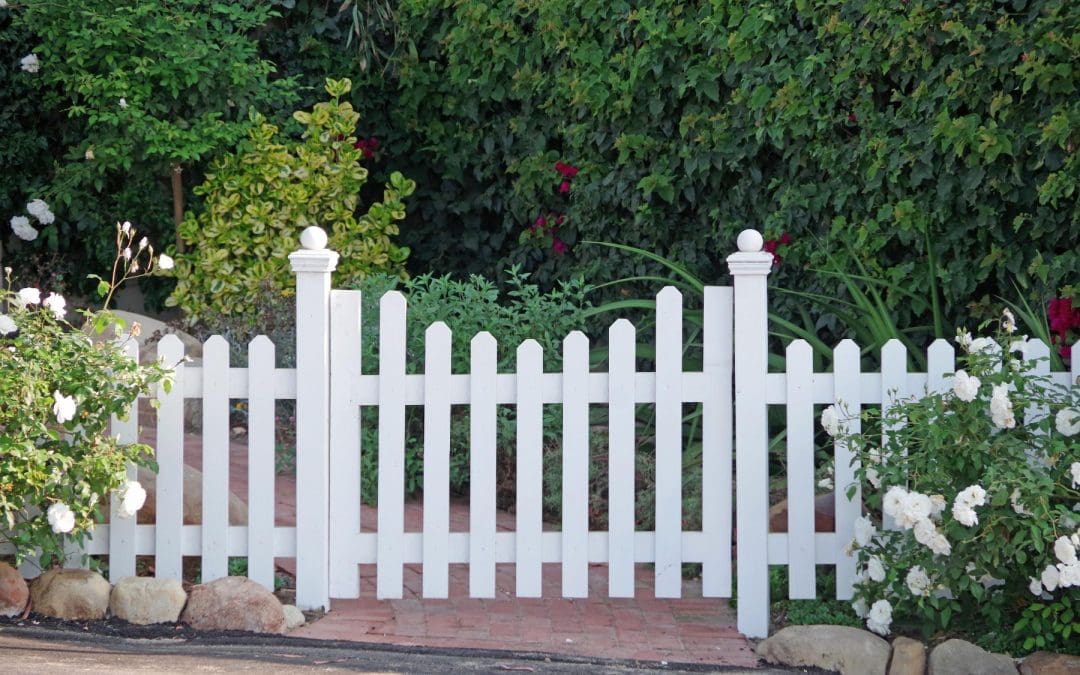Choosing a new fencing material is a significant decision for any homeowner. A fence serves many purposes, from providing a safe enclosure for pets and children to enhancing your home’s curb appeal and offering a sense of privacy. With so many options available, it can feel overwhelming to select the right material. The key is to consider your priorities: what are your needs for privacy, maintenance, and budget? By weighing these factors, you can confidently choose a material that will serve you well for years to come.
The Classic Appeal of Wood
Wood fencing is a timeless choice that has long been a favorite among homeowners. It offers a natural, warm aesthetic that can be customized with various stains and paints to match your home’s style. Common wood types for fences include cedar, pine, and redwood. Cedar is a premium option, naturally resistant to rot and insects, while pressure-treated pine is a more budget-friendly alternative.
The primary advantage of wood is its versatility and classic beauty. It provides excellent privacy and can be installed in many different styles, from classic picket fences to solid privacy walls. However, wood’s main drawback is its maintenance. It requires regular staining or sealing to protect against the elements and prevent warping, rotting, and pest damage. While the upfront cost is often lower than other materials, the long-term maintenance and potential for replacement can add up.
The Low-Maintenance Fencing Material: Vinyl
For those who prioritize minimal upkeep, vinyl fencing is an excellent choice. Made from PVC (polyvinyl chloride), vinyl fences are incredibly durable and resistant to common problems that plague wood, such as rot, insect damage, and warping. A simple wash with soap and water is typically all that’s needed to keep a vinyl fence looking pristine.
Vinyl fencing offers a clean, uniform look and comes in various styles and colors, including options that mimic the appearance of wood. It’s a great choice for privacy fences and is particularly well-suited for a white picket fence look that won’t require constant repainting. The initial cost of vinyl is generally higher than wood, but the savings on maintenance and the material’s longevity often make it a wise long-term investment.
Modern and Durable Metals
Metal fences, particularly aluminum and steel, are known for their strength, durability, and sleek appearance. Aluminum fencing is a popular choice for its rust-proof nature and low-maintenance requirements. It’s a fantastic option for security and pool enclosures because it is strong, and its open design allows for visibility. While aluminum doesn’t provide the privacy of a solid fence, it adds a touch of modern elegance to a property.
For the ultimate in strength and security, steel or wrought iron is a top contender. Wrought iron, in particular, is a classic choice for high-end properties and offers a level of unmatched elegance. Both materials are incredibly durable, but may require occasional painting or maintenance to prevent rust, especially in humid or coastal climates. While these options have a higher price point, their longevity and timeless appeal make them a worthwhile investment.
A New Era of Fencing: Composite
Composite fencing is a relatively newer option that blends the best of both worlds. Made from a combination of recycled wood fibers and plastic, composite material has the natural look of wood but the durability and low-maintenance characteristics of a synthetic material. It’s an eco-friendly choice that resists rot, insects, and warping.
Composite fencing is a great solution for homeowners who love the aesthetics of wood but don’t want the hassle of maintenance. While the initial investment is often higher than wood and sometimes even vinyl, the material’s resistance to fading and its long lifespan make it a cost-effective choice over time.
Fencing Material FAQs
Which fencing material is the most affordable?
Generally, pressure-treated pine is one of the most budget-friendly options for an initial purchase. However, materials with lower upfront costs often have higher long-term maintenance expenses.
Do I need a permit to install a fence?
In most cases, yes. Regulations vary by location, so you must check with your local municipality and any homeowner’s association (HOA) to understand height restrictions, property line rules, and permit requirements before beginning your project.
How do I know which material is best for my climate?
The right material for your climate depends on several factors. Vinyl, composite, and aluminum are excellent choices for wet or humid climates because they are resistant to rot and corrosion. Materials like composite and treated wood are a good fit in dry, hot climates. It is always wise to choose a material engineered to withstand the specific weather conditions in your area.
GoPro Home Inspections offers inspection services to homebuyers and sellers. Contact us to schedule an appointment.

